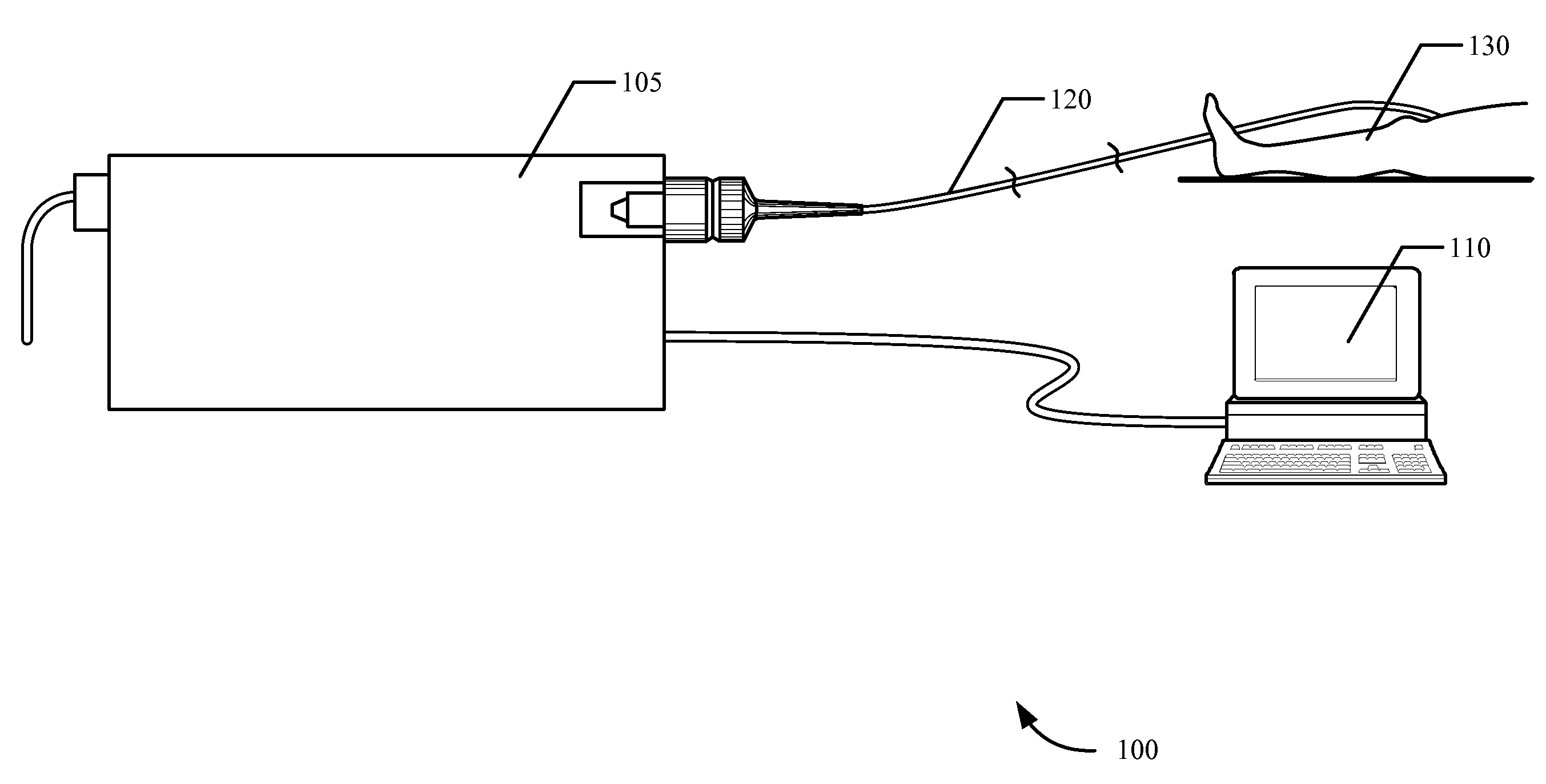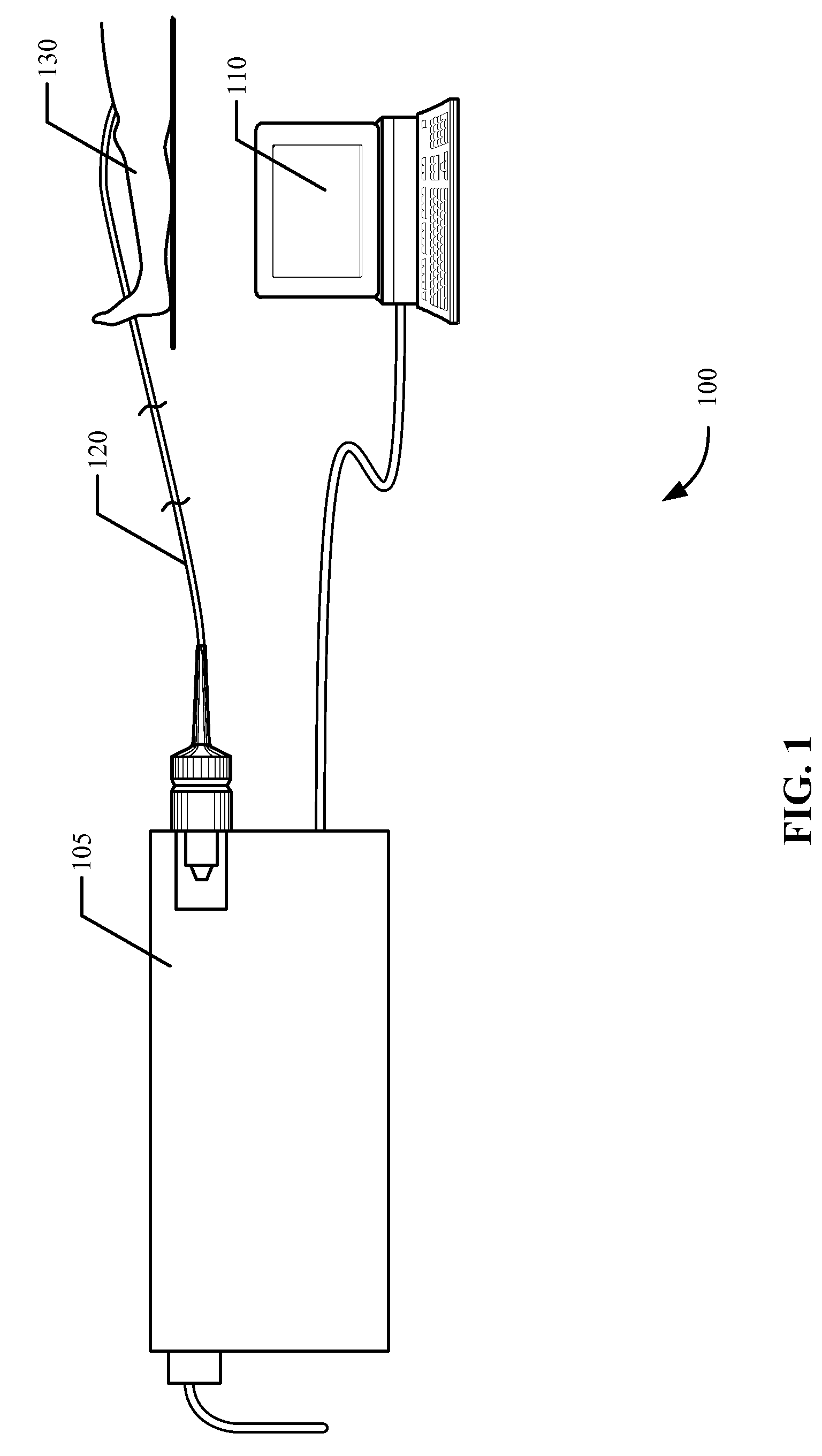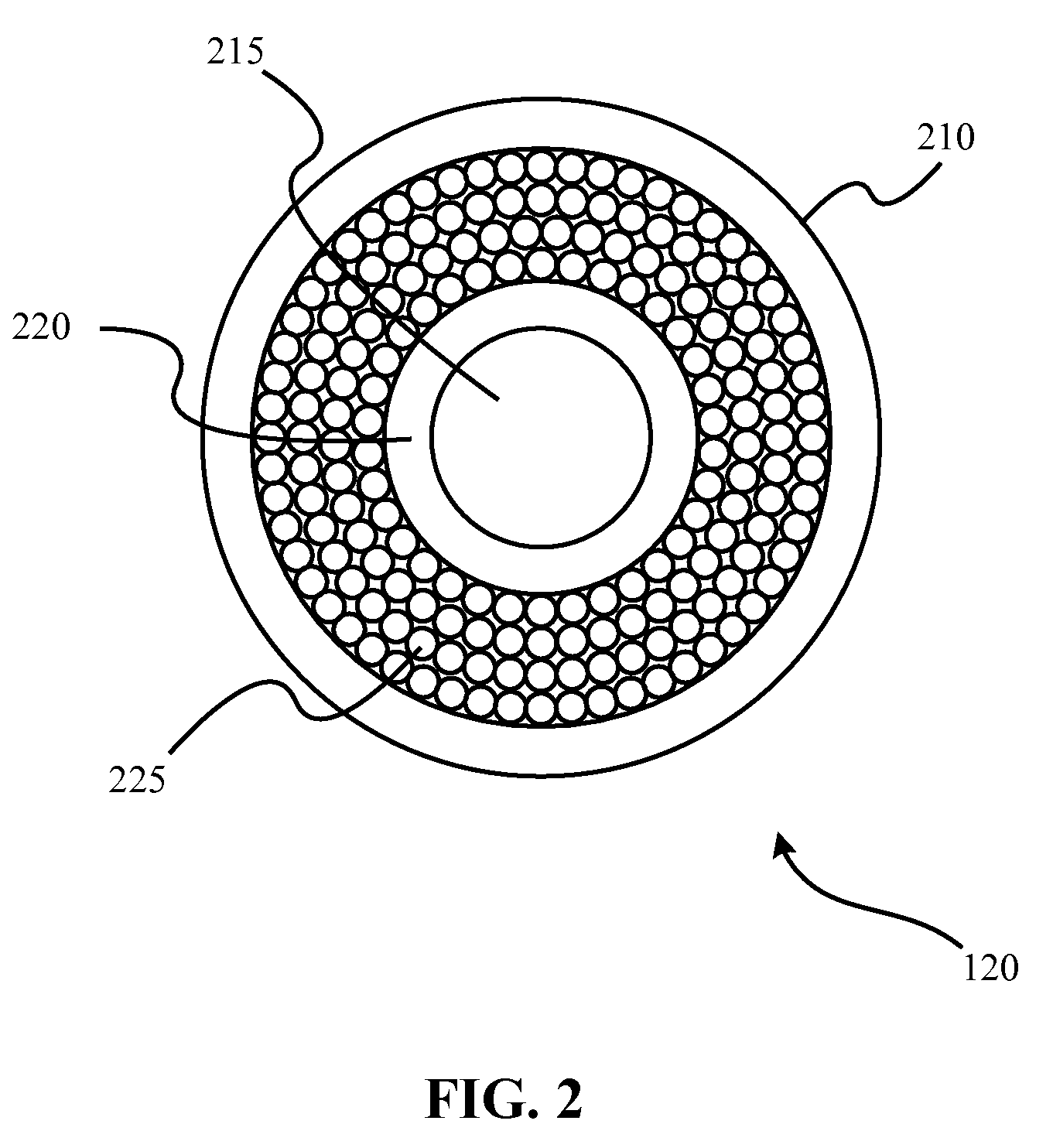Low-Loss Polarized Light Diversion
a polarized light, low-loss technology, applied in the direction of instruments, catheters, optical radiation measurement, etc., can solve the problem that the sensing or forwarding probe may not accurately image the vessel or cavity wall, and achieve the effect of maintaining light polarization and minimal polarization loss
- Summary
- Abstract
- Description
- Claims
- Application Information
AI Technical Summary
Benefits of technology
Problems solved by technology
Method used
Image
Examples
Embodiment Construction
[0024]The ensuing description provides preferred exemplary embodiment(s) only, and is not intended to limit the scope, applicability or configuration of the disclosure. Rather, the ensuing description of the preferred exemplary embodiment(s) will provide those skilled in the art with an enabling description for implementing a preferred exemplary embodiment. It being understood that various changes may be made in the function and arrangement of elements without departing from the spirit and scope as set forth in the appended claims.
[0025]An optical sensor that provides lateral viewing while maintaining light polarization is provided according to one embodiment of the invention. The sensor may be used, for example, by a physician to monitor nearby tissue while removing a lead from an implanted electrical device such as a lead from a pace maker. Over time an implanted lead may become embedded within the surrounding tissue. Often such leads are removed using a catheter with a hollow inn...
PUM
 Login to View More
Login to View More Abstract
Description
Claims
Application Information
 Login to View More
Login to View More - R&D
- Intellectual Property
- Life Sciences
- Materials
- Tech Scout
- Unparalleled Data Quality
- Higher Quality Content
- 60% Fewer Hallucinations
Browse by: Latest US Patents, China's latest patents, Technical Efficacy Thesaurus, Application Domain, Technology Topic, Popular Technical Reports.
© 2025 PatSnap. All rights reserved.Legal|Privacy policy|Modern Slavery Act Transparency Statement|Sitemap|About US| Contact US: help@patsnap.com



